Although they have somewhat different meanings, the terms Cardiac arrest vs Heart Failure are occasionally used interchangeably when discussing cardiac emergencies. Simple preventive measures, recognizing warning signs, and understanding the difference, including the risk and signs of cardiac arrest, can save lives. What to look for, who is at risk, and what to do next are all explained by our professionals at Well-Life Hospital in Abuja.
What is cardiac arrest?
Cardiac arrest occurs when the heart stops beating abruptly. Cardiac arrest typically results in death within minutes if treatment is not received right away. This is not the same as heart failure, in which the heart continues to beat but is unable to pump blood efficiently enough to fulfill the body’s demands.
The differences in heart failure
A condition known as heart failure occurs when the heart’s ability to pump blood is diminished. Although they may experience dyspnea or weariness easily, people with heart failure are still alive, and lifestyle modifications, monitoring, and treatment can help.
The significance of the distinction
How someone is treated depends on whether they are experiencing cardiac arrest or increasing heart failure. While cardiac arrest necessitates prompt emergency action (such as CPR and defibrillation), heart failure typically benefits from long-term lifestyle modifications, medication optimization, and monitoring.
What is the prevalence of cardiac arrest?
Heart disease continues to be a major cause of death worldwide. According to contemporary estimates, heart disease is responsible for millions of fatalities worldwide, with abrupt cardiac events accounting for a significant fraction of these deaths. Because of this fact, awareness and prompt action are crucial.
What is the prevalence of cardiac arrest?
Heart disease continues to be a major cause of death worldwide. According to contemporary estimates, heart disease is responsible for millions of fatalities worldwide, with abrupt cardiac events accounting for a significant fraction of these deaths. Because of this fact, awareness and prompt action are crucial.
Typical danger factors to be aware of
A sudden cardiac event is more likely to occur in people with certain chronic conditions:
- Elevated blood pressure, or hypertension
- Diabetes
- elevated cholesterol
- Sedentary lifestyles and obesity
- Smoking and drinking too much alcohol
- Drugs or illnesses that make blood clotting more likely
- Heart disease in the family
Our professionals advise timely lifestyle modifications and routine screening if you have any of these conditions.
Early warning indicators: what to watch out for
Early indicators are frequently vague and subtle. Typical warning signs include:
- Unusual fatigue for daily chores
- Breathlessness during exertion (load carrying, stair climbing)
- Activity-induced tightness or soreness in the chest that goes away with rest
- Pain that travels to the jaw, arm, back, or left shoulder
- Dizziness or fainting episodes
Crucially, for some patients, a cardiac arrest occurs without any obvious signs. For this reason.
Risk screening and identification are important.
- Electrocardiograms or ECGs are basic screening procedures that can identify rhythm issues and measure the electrical activity of the heart.
- Echocardiography (Echo): demonstrates the anatomy and physiology of the heart and may reveal severe illness.
To suggest the next course of action, our professionals usually combine these with risk profiling and physical evaluation.
Doable preventative measures you can begin right now
- Recognize your numbers: Regularly check your cholesterol, blood sugar, and blood pressure.
- Increase your movement by avoiding prolonged sitting and aiming for frequent, moderate activity.
- Control weight by aiming for a healthy BMI, ideally between 18 and 25.
- Give up smoking and drink in moderation.
- Make heart-healthy eating choices by limiting processed and quick foods and giving veggies, whole grains, lean meat, and healthy fats priority.
- Consult your physician again; if you have risk factors, adhere to the screening schedules that our specialists have suggested.
When to get emergency assistance
A cardiac arrest may occur if a person collapses unexpectedly, becomes unconscious, and stops breathing regularly. Make an instant call to emergency services and, if you are certified, start CPR. Use an AED as directed if one is available; early defibrillation can save lives.
Well-Life Hospital your heart health partners.
At Well-Life Hospital, our professionals provide counseling, customized risk-reduction plans, and cardiac screening services like echocardiography and ECG. Schedule a consultation right now if you or a family member exhibit concerning symptoms or risk factors.
For additional information, see our articles hub at welllifehospital.com/articles.
FAQs
Q: Is it possible to prevent cardiac arrest?
A: lot of instances can be avoided with risk factor management and screening for early detection.
Q:Does chest pain necessarily indicate a cardiac condition?
A: No, there are other possible causes of chest pain. However, any unexplained chest pain needs to be evaluated right away.
Q: How frequently should I get an ECG?
A: Risk determines frequency; see our specialists for a customized timetable.


